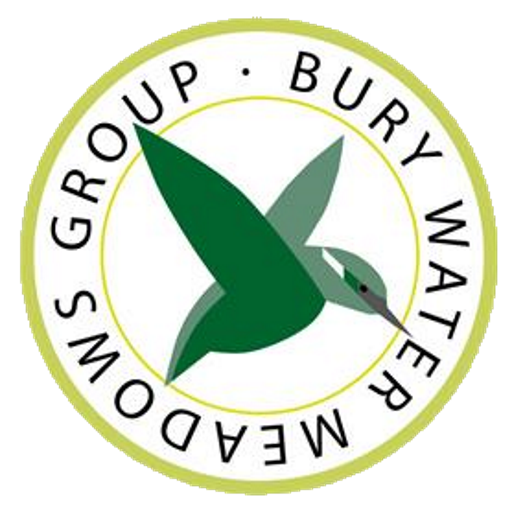A Group for all Seasons
Bury Water Meadows Group works to preserve and enhance the water meadows, and the chalk streams flowing through them. Bury St Edmunds has the privilege, and responsibility, of hosting two examples of this precious, globally rare habitat that is capable of supporting an array of iconic species such as brown trout, kingfisher and water vole.
The scope of the work undertaken by BWMG has expanded dramatically since its establishment over ten years ago. The group’s primary area of operations ranges from Ram Meadow to the north of the town, and then follows the course of the River Lark upstream, through the Abbey Gardens and the site of the monastic fishponds in the Crankles, south to No Mans Meadows. We have around 200 members, with a dedicated core of volunteers who turn out in all weathers to do their bit for the local environment. There is always a great deal to be done and we are always busy. Some issues, such as water quality and the vagaries of our increasingly erratic and unpredictable climate, are outside our control but there is still much that we can do to try and ensure that future generations can enjoy what we perhaps sometimes take for granted.
Our work is seasonal and throughout the year we run three work parties a fortnight. During autumn and winter, when the birds are not nesting, we wade in ditches, clearing undergrowth and low-growing tree cover to create a light and shade mosaic of habitats to encourage biodiversity; where the unsung but vital fungi, slightly scary stag beetles and spiders, the shy and elusive water vole and the more glamorous kingfishers and magjestic barn owls can thrive. This is when we continue our ongoing habitat management work at the large pond in Ram Meadow, ( formerly known as the scrape).

As the days lengthen and the weather becomes warmer we discard our waders and take up scythes to cut down nettles along the Lark Path, and in Crankles South in pursuit of our aim to create a wildflower meadow. The wildflower meadow project is one which is now showing good signs of progress as the nettles have succumbed to the scythe. In the spring and early summer the meadow is rich in wildflowers such as ox eye daisy, tufted vetch, cow slip and lady’s bedstraw and is alive with bees and butterflies. Yellow rattle is known as the meadow maker for helping keep the grasses in check so that the wildflowers have a chance to germinate and thrive.
Whatever the time of year, we finish our work parties with a sense of achievement in a job well done! We are always on the lookout for new volunteers to help us in our work, so if perhaps the turning of the season from summer into autumn is prompting you to start a new activity do get in touch!
Richard Counihan Chair BWMG

